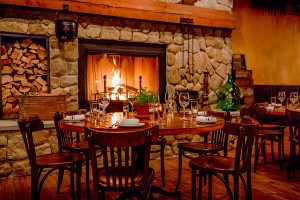Yet Another Helping of America’s Test Kitchen
 The latest recipe collections from cooking-technique juggernaut America’s Test Kitchen—headed by Boston’s own Christopher Kimball—arrived in the mail with a thud this week. Heavy as my sad attempts at Christmas fruit bread but far more digestible, The Cook’s Country Cookbook and The America’s Test Kitchen Family Baking Book come packed with a collective 1,200 recipes guaranteed to keep spatula fiends busy for years.
The latest recipe collections from cooking-technique juggernaut America’s Test Kitchen—headed by Boston’s own Christopher Kimball—arrived in the mail with a thud this week. Heavy as my sad attempts at Christmas fruit bread but far more digestible, The Cook’s Country Cookbook and The America’s Test Kitchen Family Baking Book come packed with a collective 1,200 recipes guaranteed to keep spatula fiends busy for years.
Which may be alarming for those still working their way through any of the 50-odd books listed on the America’s Test Kitchen website: America’s Best Lost Recipes, Behind the Scenes with America’s Test Kitchen, Best of America’s Test Kitchen 2008, plus books devoted to casseroles, side dishes, American classics, Italian classics, restaurant favorites, and so on. For those who prefer taking a micro, rather than macro, approach, there’s How to Cook Chicken Breasts and How to Cook Simple Fruit Desserts.
Of the two new releases, both in bookstores this month, the pick for measuring spoon–challenged types is the Family Baking Book ($34.95): Handily packaged in a flip-open binder and scrupulously illustrated, it covers everything from deep-dish pizza to holiday cookies to imposing layer cakes.
There’s a cooking tip on nearly every page; name-brand picks for the best baking tools; and, most helpfully, an occasional feature called “Don’t Make This Mistake!” that shows in side-by-side photos the difference between a sloppy cheesecake and an ideal one, for example, or a domed pie crust and a perfect one. The recipes are more greatest-hits (linzertorte, Key lime pie, creme brulee) than exotica, but those looking to work up a wider repertoire of baked treats will find few better resources.
The Cook’s Country Cookbook ($34.95), on the other hand, feels more like a one-off pleasure—something to borrow from a foodie friend or check out from the library for a few weeks, browsing for new ideas. Here you’ll find “heritage” recipes like cider-baked ham and hermit cookies, plus an array of regional specialties including Boston brown bread, Carolina pimiento cheese chicken salad, and Maryland friend chicken with cream gravy.
Most are prefaced with mini essays that recap the recipe’s history or pinpoint best-results techniques—good for those who enjoy a bit of background, less so for those who just want to get cooking. Also, color photographs are relatively sparse, so you’ll have to rely more on the text than the visuals. Good thing, then, that text comes from a publishing team that’s already written up enough dishes to feed an army (starting with, perhaps, 40 ways to cook a chicken breast).


